Chrysauginae
Chrysauginae
Classification
- Phylum: Arthropoda
- Subphylum: Hexapoda
- Class: Insecta
- Order: Lepidoptera
- Superfamily: Pyraloidea
- Family: Pyralidae
- Subfamily: Chrysauginae
Pronunciation
How to pronounce Chrysauginae: //ˌkɹɪsɔːˈdʒɪniː//
These audio files are automatically generated. While they are not always 100% accurate, they are a good starting point.
Images
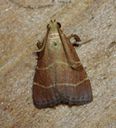
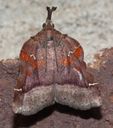
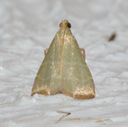
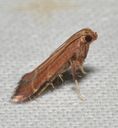
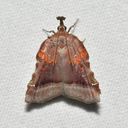

Summary
Chrysauginae is a subfamily of snout moths known for their unique morphology and ecological niches. They include specialized genera that have adapted to unusual habitats, such as living in sloths' fur or feeding on sloth dung.
Physical Characteristics
Heavily scaled legs, particularly visible on forelegs; adults exhibit a distinctive posture standing 'high on the forelegs'.
Identification Tips
FW shape can be triangular, trapezoidal, or oblong; placement and shape of crosslines vary; FW ground color and fringe color can differ. Distinctive FW shapes are present in the genera Clydonopteron and Salobrena. For Penthesilea and Tosale, the typical posture is with the abdomen upturned.
Habitat
Primarily Neotropical, with larvae often found in unique habitats such as sloth dung, Hymenoptera nests, and feeding on various plant parts.
Distribution
Primarily Neotropical region; 38 species identified in the local area.
Diet
Most larvae are phytophagous, feeding on plant material such as seeds, fruits, stems, and leaves. Some species also have unique feeding habits, like those feeding on sloth dung.
Ecosystem Role
Contribute to nutrient recycling through dung decomposition and may play roles in plant pollination or seed dispersal.
Evolution
The phylogenetic relationships within this subfamily are not fully resolved; some Australian genera have been tentatively placed in it without strong support.
Tags
- Chrysauginae
- snout moth
- Pyralidae
- Lepidoptera
- Neotropical